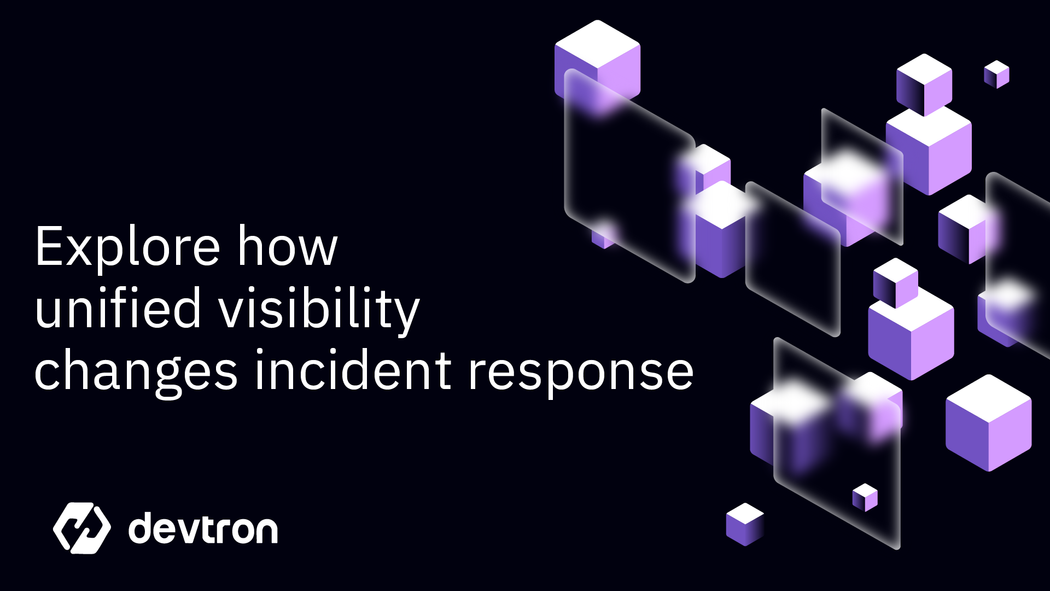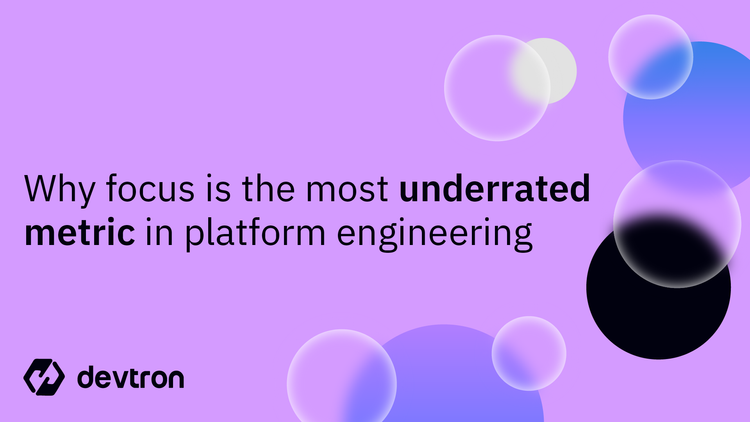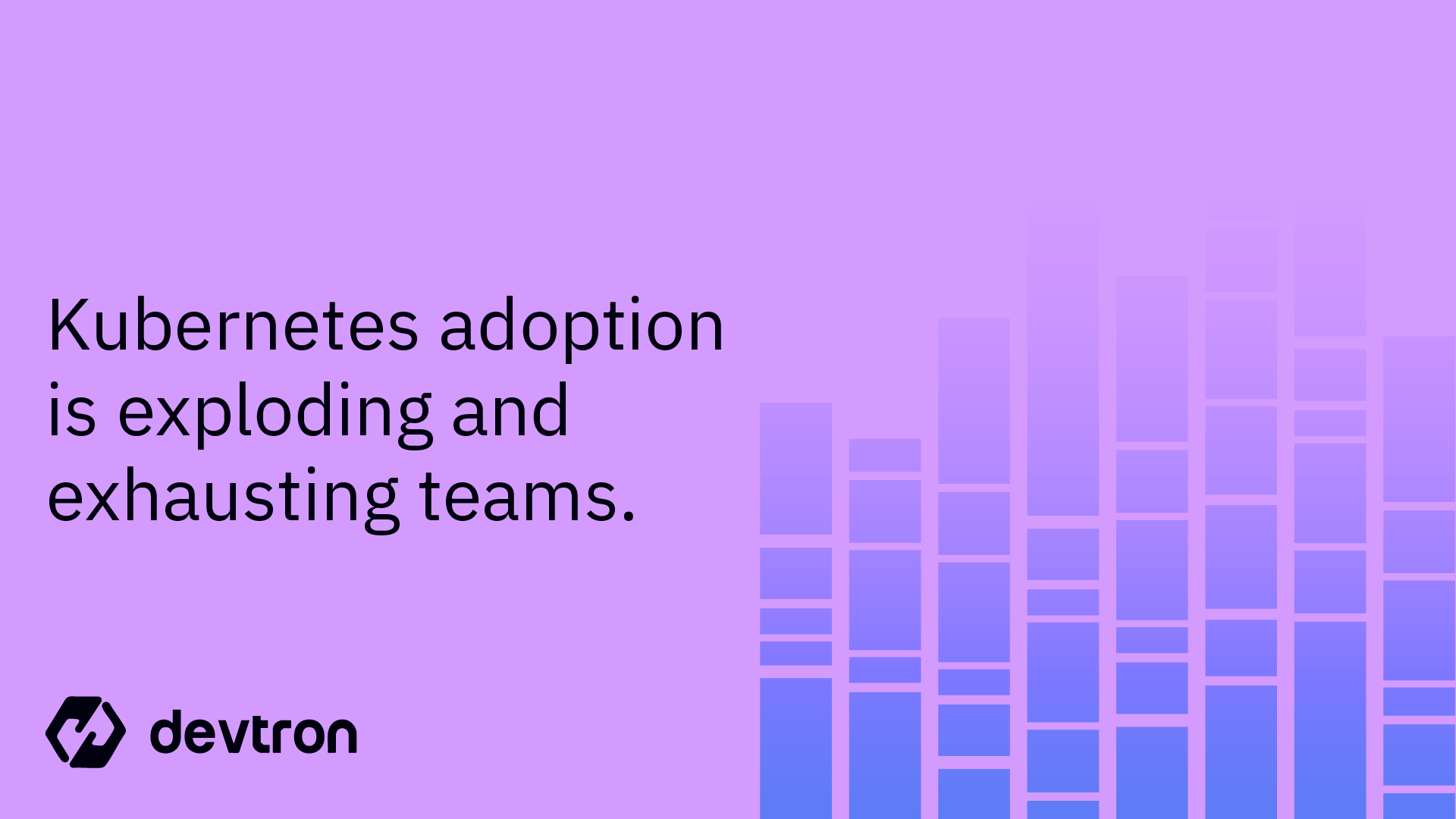"We couldn't see that our API latency was spiking because it was running on an overloaded node." That's how a platform engineer described their visibility gap during a critical incident.
The scenario is all too familiar: metrics showed CPU utilization within normal ranges, response times were degrading, memory usage hit critical levels, but there was no clear connection between these symptoms. Meanwhile, cost dashboards showed rising infrastructure spend, security scans flagged nothing concerning, and deployment logs appeared clean. The team was flying blind during their most critical moments.
The surge in Kubernetes adoption has revolutionized how we scale infrastructure. But with that, it has multiplied the complexities for IT teams trying to monitor application behavior, performance, and health. Traditional domain-centric monitoring solutions simply cannot provide the complete picture that DevOps and SRE engineers need during incidents. Because they weren't designed for the higher degree of diversity and agility that modern Kubernetes environments demand.
The complexity is only increasing, and every incident response starts with the same challenge: connecting the dots between disparate signals before problems cascade into business-impacting outages.
Why Unified Visibility Transforms Incident Response
As engineers are struggling to manage rising IT complexity while delivering innovation at scale, the gap between incident detection and resolution continues to widen. Here's how unified visibility fundamentally changes the incident response game:
Eliminate Blind Spots During Critical Moments
The platform engineer's experience with the overloaded node exemplifies a common problem: traditional monitoring creates visibility gaps that become apparent only during incidents. Unified Kubernetes visibility closes these gaps by providing complete insight across all components, dependencies, and performance indicators in real-time.
This 360-degree view ensures that when API latency spikes, teams can immediately see the connection to underlying infrastructure issues – whether it's an overloaded node, resource contention, or cascading failures across services.
Break Down Silos That Slow Resolution
Incidents often span multiple domains – application performance, infrastructure capacity, security concerns, and network connectivity. Traditional monitoring tools create organizational silos that slow down resolution as teams struggle to correlate information from different systems.
Unified visibility unifies IT teams around a common context during incidents, eliminating the blame game and reducing both MTTI (Mean Time to Identify) and MTTR (Mean Time to Resolve). When everyone is looking at the same comprehensive data, resolution accelerates dramatically.
Prioritize Response Based on Business Impact
Not all incidents are created equal, but traditional monitoring makes it difficult to quickly assess business impact. Operational silos make it challenging for IT teams to understand when and how problems affect user experience and revenue.
Unified visibility prioritizes incident response by linking application performance directly to business outcomes. Teams can immediately see which issues to fix first, what to roll back in CI/CD pipelines, and how to minimize customer impact while maintaining business continuity.
Shift from Reactive to Proactive Response
Traditional monitoring solutions force IT teams into reactive mode – scrambling to locate and fix issues after they've already impacted users. The overloaded node scenario could have been prevented with proactive monitoring that showed the correlation between resource utilization and application performance before latency spiked.
Unified visibility enables a proactive approach to incident management, allowing teams to identify and resolve potential issues before they cascade into customer-facing problems.
Optimize Resource Allocation During Incidents
During incidents, teams often over-provision resources to quickly restore service, leading to unnecessary costs. Without unified visibility, it's challenging to make informed decisions about resource allocation under pressure.
Unified visibility provides the capability to instantly simulate "what-if scenarios" and make precise capacity decisions during incidents. This enables teams to allocate appropriate resources in real-time while minimizing both service impact and infrastructure costs.
How Devtron Closes the Gap
The gap between "what's happening" and "what we can see" was costing teams hours of resolution time and creating unnecessary stress.
As a Kubernetes management platform, we built a way to see the way Kubernetes actually runs: applications and infrastructure side by side, pods tied to the nodes they're running on, services mapped to their dependencies, all in real time.
It means when latency spikes, you don't have to guess whether it's bad code or an overloaded node. When costs rise, you don't need to dig through three dashboards to see which service is hogging resources. And when you scale, you know immediately how those changes ripple across the system.
The overloaded node story doesn't have to be your story. Devtron closes that gap. Unified visibility shows how pods, nodes, and services affect each other in real time.






